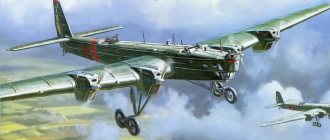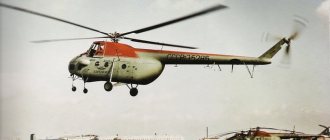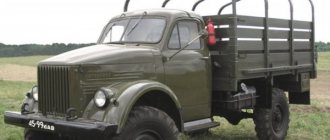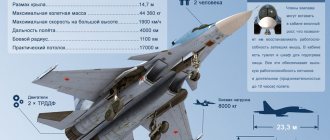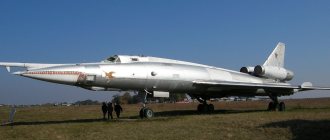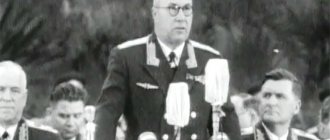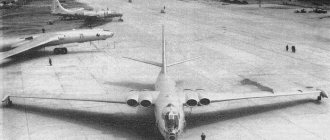Often, American industry gave some impetus to the development of Soviet industry. Suffice it to recall the Gorky Automobile Plant, built with the participation of Ford. Post-war Soviet military trucks were created under the great impression of Studebaker.
Aviation did not escape American influence either. Despite the significant achievements of Soviet designers in the 30s, the legendary Li-2 transport aircraft is a copy of the DC-3. A new round of development of bomber aviation had to begin with borrowing. The model for the creation of the Tu-4 aircraft was the B-29.
History of creation
In the 30s, the Soviet Union was one of the leaders in the development of bomber aircraft, especially heavy ones. However, during the war years this advantage was completely lost. Although in the last pre-war years the production of the modern Pe-8 heavy bomber was mastered, by 1945 it had become obsolete. And only a few dozen such aircraft were assembled, which did not allow the Pe-8 to play any significant role.
At the end of 1942, the USSR became aware of the newest American bomber, the B-29. Already in 1943, a number of Soviet design bureaus, including Andrei Tupolev's design bureau, received the task of developing a promising long-range bomber, not inferior to the American one. However, things went slowly - Tupolev only managed to start building the model, the rest of the design bureaus did not even get to that. But in the second half of 1944, four B-29s made an emergency landing on USSR territory.
After studying the aircraft, Vladimir Myasishchev suggested simply copying them.
Government and I.V. Stalin, realizing that the plane was needed as soon as possible, agreed. Work on launching the domestic analogue of the B-29 into series was entrusted to the Tupolev Design Bureau.
Tupolev, having examined the plane, concluded that the work would take 3 years. The designer was required to meet the deadline within 2 years, but at the same time was given broad powers and maximum support. And they were necessary. The opinion that the Tu-4 was obtained by simply dismantling the B-29 and making working drawings is erroneous. After all, it was found out that the Americans not only used solutions that were new to Soviet designers - there were no similar materials in the USSR. And this is not to mention the instruments and different measurement systems.
At first, Tupolev received proposals to simplify the design and use plywood and delta wood instead of mastering the production of new alloys. But the designer stood his ground. As a result, the first production Tu-4s were put into operation at the beginning of 1947.
Tu-4 Dimensions. Engine. Weight. Story. Range of flight. Service ceiling
Even during the Great Patriotic War in September 1943, OKB A.N. Tupolev was asked to develop a preliminary design and build a model of a heavy long-range bomber. The project, which received the index "64", was a low-wing aircraft with spaced tails. By mid-1945, basic calculations were carried out, models were produced, and the Design Bureau began producing drawings. But then it turned out that the industry would not be able to deliver modern equipment - navigation, shooting, radar - in the required time frame.
Design
The Tu-4 aircraft was almost completely identical in design to the American B-29 bomber. It was a 4-engine monoplane with a mid-wing arrangement and a single-fin tail. The cigar-shaped fuselage of round cross-section included 6 compartments, of which 3 were pressurized cabins. Between the front and central pressurized cabins there was a bomb bay; above it there was a sealed manhole connecting the cabins. The rear gunner sat in the rear cockpit.
The all-metal wing was assembled from 2 detachable sections and a center section. Engine nacelles and landing gear were attached to the caisson formed by the center section power set. Continuous ailerons with trimmers, as well as flaps with an electromechanical drive, were attached to the detachable parts.
The Tu-4 was equipped with 18-cylinder star-shaped air-cooled engines ASh-73TK.
They were equipped with a 2-stage supercharging system, including 2 turbochargers and a driven centrifugal compressor. Fuel came from soft, protected tanks located in the center section.
As on the B-29, additional tanks could be installed in the bomb bay. The propellers are 4-bladed, with automatically variable pitch. The auxiliary power unit on the Tu-4 was a small-sized gasoline engine that drove a generator.
The bomber's hydraulic system, as on the prototype, was used only to control the wheel brake mechanisms. All other drives were electric. The current was supplied to them by 6 generators installed on the engines.
The radio navigation equipment of the Tu-4 included a radio compass, 2 radio altimeters and a marker receiver. The plane was also equipped with a “friend or foe” system. The accuracy of the bombing was ensured by the Cobalt radar, with the help of which the lead was calculated. The results of dropping the bombs were recorded by cameras and a movie camera.
But the Tu-4 differed from the B-29 not only in its power plant. Defensive weapons were strengthened. While the Americans installed 12.7 mm Browning machine guns on bombers, the USSR used 20 mm Berezin B-20 cannons. Moreover, on later aircraft the guns were again replaced with 23 mm NR-23 guns designed by Nudelman and Richter.
Tu-4 design
The aircraft is an all-metal cantilever monoplane of normal design. The mid-wing is constructed using a two-spar design with a high aspect ratio. The fuselage has a round cross-section and is semi-monocoque. The vertical tail fixed to the fuselage is single-finned, horizontal, and cantilevered. The controls consist of ailerons, elevator and rudder.
The semi-monocoque fuselage has a circular cross-section in which the skin is attached to the frames and stringers. D-16T (duralumin) is used as a material for sheathing sheets. The fuselage frame is constructed using 60 frames (normal and power) and 40 stringers, which are power longitudinal beams.
The lights of the nose cone and cockpit are mounted into the contours of the domed part of the fuselage. They are made of cast magnesium alloy. It should be noted that for the first time in the USSR, pressurized cabins in bombers were made with comfort and easy accessibility for the crew, which consists of 11 people: the ship's commander - left pilot, co-pilot - right pilot, navigator, mechanic, bombardier, radio operator, 4 gunner and operator onboard radar.
The central part of the fuselage is located between the convex pressurized frames of the middle and front pressurized cabins. It also forms the rear and front bomb bays. The wing caisson is also located here. Oxygen cylinders and a radar unit are reinforced under it. The middle and front pressurized cabins are connected to each other thanks to a pressure seal. The aft compartment of the fuselage begins from the transition to the middle part of the pressurized cabin. Presented in the form of an unsealed conical compartment.
The wing belongs to the high aspect ratio class. The plan is trapezoidal and slightly curved in the area of the inner engine nacelle. The structural and power structure of the wing is two-spar, with working skin. The beam spars of the I-section wing consist of powerful D-16T chords. To reduce aerodynamic drag, the engine nacelles are made in a streamlined shape. The intercooler and oil coolers were installed under the frontal engine cooling air intake.
The plumage is presented horizontal and vertical. The horizontal one consists of two elevators and a stabilizer, the vertical one consists of a rudder and a fin.
The VPU is represented by a three-legged landing gear, which is completely retractable, flaps and a tail safety support heel. The main struts, like the bow one, are made according to the cantilever design. They have built-in oil-gas shock absorbers and dual wheels. Slotless single-section flaps provide additional stopping or lifting assistance during landing or takeoff.
The aircraft was equipped with 4 18-cylinder air-cooled piston engines. Equipped with a drive supercharger, the ASh-73TK has two turbochargers. The total volume of fuel tanks is 20,180 l.
Modifications
The Tu-4A was an aircraft adapted to deliver nuclear weapons. It was equipped with protected crew cabins and a heated bomb bay. The KS-1 cruise missile carrier received the Tu-4K designation. Since the mid-50s, the transport-landing Tu-4D, in which paratroopers were placed in a bomb bay, and equipment in containers on an external sling, became widespread.
By placing additional tanks and photographic equipment in bomb bays, the Tu-4R reconnaissance aircraft was obtained.
In addition, an in-flight refueling system was tested on the Tu-4, but at that time it turned out to be ineffective and did not pass state tests. And by the time the improved system appeared, the Air Force switched to jet machines.
Exploitation
They began training pilots for the Tu-4 in advance, when production vehicles were just beginning to be assembled. In fact, the 203rd Guards Regiment began switching to new bombers from the beginning of 1948. By September 1949, the 52nd Guards Regiment had reached combat capability. By this time, Tu-4s began to massively replace long-range bombers remaining from the war. The rearmament was finally completed only in 1953.
The aircraft were actively used in exercises and were periodically put on combat readiness. Since 1951, the Tu-4 became the first Soviet bomber to carry nuclear weapons. But it was the main weapon of long-range aviation for a very short time. The last vehicles were delivered to the customer in 1953 - and already in 1954, the 203rd Guards Regiment began to be transferred to the new Tu-16 jets.
However, this did not mean the complete end of exploitation. Bombers began to be converted into transport vehicles for the needs of airborne troops. However, this turned out to be such a “temporary measure” that the landing Tu-4D began to be written off already in 1961, as new cargo aircraft arrived. In the same year, the Air Force also got rid of the last Tu-4s.
For some time, the remaining aircraft were used in polar aviation.
But the Tu-4 served the longest in China. 20 (according to other sources - 50) bombers were transferred there, and some of them survived until the 90s. They were used, for example, as AWACS aircraft. At the same time, piston engines were replaced by turboprop units.
Flight performance
Let's compare the Tu-4 aircraft with its direct ancestor - the B-29 bomber. And also with its modernized modification B-50.
| Tu-4 | B-29 | B-50D | |
| Length, m | 30,1 | 30,1 | 30,1 |
| Wingspan, m | 43 | 43 | 43 |
| Maximum speed, km/h | 558 | 580 | 612 |
| Combat load, t | 11,9 | 9 | 9 |
| Range, km | 3000 | 4865 | 7890 |
The characteristics of the Tu-4 themselves were, as they say, “at the level.” After all, it was copied from the best aircraft in its class. An absolute advantage was the strengthening of defensive weapons. The combat load was somewhat higher, but this was not always realized - for example, both Soviet and American bombers could take 8 bombs of 1000 kg caliber or 40 bombs of 220-250 kg caliber.
Unfortunately, having gained weight, the Soviet plane lost some speed. As for the B-50, it was superior to the Tu-4 in both speed and range (especially with the use of in-flight refueling).
Sometimes direct copying of an American aircraft was assessed negatively.
Allegedly, Soviet designers could well have created the best bomber on their own, without looking to the West. At the same time, they try not to pay attention to how much work this “translation of threads into metric” cost.
And, ultimately, mastering the production of the Tu-4 not only provided the Soviet Air Force with a modern aircraft. It also made it possible to rebuild the aviation industry, preparing the ground for further developments.
LONG LONG AVIATION OF RUSSIA
Tu-4 bomber serial number 2805103 at the Russian Air Force Museum in Monino.
Tu-4 (product "P", according to NATO codification: BULL - "BULL") - Soviet piston, heavy (long-range, high-altitude, high-speed) bomber of the 3rd generation. Geometric copy and analogue of the US Air Force B-29 bomber. Developer - Tupolev Design Bureau, first flight and start of mass production - 1947.
Tu-4
- a piston-powered Soviet strategic bomber, which was in service with the long-range aviation of the USSR Air Force from 1949 to the early 1960s. The plane was an unlicensed copy of the American Boeing B-29 bomber.
The aircraft was created by reverse engineering with the help of three American B-29s interned during World War II. The design and equipment (right down to the interior of the pressurized cabins) were completely copied from the American model. The only exceptions were cannon armament, the propeller-motor group of the power plant and radio communications. And also Soviet engines had a power of 2400 hp. With. instead of 2200 l. With. from the original. The cannon defensive armament consisted of 10 quick-firing 23 mm cannons. This significantly increased the defensive capability of the Soviet “superfortress” compared to the 12 12.7 mm machine guns of the B-29. At the same time, control of all firing installations could be carried out by one person from any place. The stock of bombs was 6 tons. Bombers carrying nuclear weapons (Tu-4A) could carry one atomic bomb on board. These machines were equipped with biological protection.
The range of the Tu-4 was only 5100 km and was not intercontinental. Therefore, it belonged to the class of long-range bombers in the USSR Air Force. At that time there were no squadrons of new generation heavy strategic bombers. Until the mid-1950s. the main striking force was only the Tu-4, equipped with an in-flight refueling system. They were capable of retaliating against US bases in Western Europe and the UK.
The development of mass production of Tu-4 aircraft in the shortest possible time certainly ensured the transition of Soviet heavy aircraft manufacturing to a new, higher technological level. For example, after the creation of the Tu-4 in the Soviet aircraft industry, all elements of equipment were combined into systems. The first remote control system in the USSR and in the world was installed on the Tu-4. The development of the new system was carried out by the All-Union Plant No. 118. Nowadays it is the OJSC Moscow Research and Production Complex Avionics named after O. V. Uspensky.
In the USSR, the Tu-4 aircraft was the last serial heavy bomber with piston engines.
Performance characteristics of the Tu-4
| Aircraft length, m | 30,18 |
| Aircraft height, m | 8,95 |
| Wingspan, m | 43,05 |
| Wing area, m² | 161,7 |
| Chassis track, m | 8,67 |
| Engines | 4 piston engines ASh-73TK |
| Engine power | 1,770 kW (2,400 hp) |
| Empty aircraft weight, kg | 32270 |
| Normal take-off weight, kg | 47500 |
| Maximum weight, kg | 66000 |
| Flight speed max., km/h | 558 |
| Flight range max., km | 6200 |
| Mileage, m | 1070 |
| Run, m | 960 |
| Practical ceiling, m | 11200 |
| Crew, man | 11 |
Armament of the Tu-4 long-range bomber
The aircraft had two cargo compartments into which free-falling ammunition was loaded, usually in four main versions. For aiming, not only the Barium radar sight was used, but also the OPB-18 optical sight. For automatic bomb release there was an ESBR-45 electric release device.
The Tu-4 could carry 4 high-explosive bombs FAB-3000 or 8 FAB-1500, armor-piercing BRAB-500 and BRAB-1000, smaller FAB-250M, or one large FAB-5000 or FAB-6000. As well as chemical ammunition KHAB-500-280S and KHAB-250-150S, filled with a condensed mixture of mustard gas and lewisite. In naval units it was possible to hang bottom or anchor mines on the aircraft. But the main weapon of the aircraft, undoubtedly, was considered the 1200-kilogram Tatyana nuclear bomb with a 30-kt RDS-4T charge.
If the first production aircraft, starting with the Tu-4, No. 220004, had a PV-20 cannon defensive armament system with B-20E cannons, then later, starting with the 32nd series, the aircraft were equipped with a PV-23 system with NR-23 cannons.
In 1948, work began on the KS-1 cruise missiles. A modification of the Tu-4K, designed to work with them, was developed in 1951. As a result of successful flight tests in 1952, the vehicle entered service with naval aviation. A project to equip the Tu-4 with turboprop engines was also considered. However, since the expected gain in performance characteristics was only 10-15%, the project never left the development stage. By the way, like the Burlak system - the idea of using the Tu-4 as a tow vehicle for two MiG-15 fighters used to protect it.
Modifications
Tu-4 is a basic serial long-range bomber.
Tu-4A is a carrier of an atomic bomb; a red lightning bolt was painted on the fuselage.
Tu-4 is a refueling tanker. To create a full-scale model, two Tu-4 aircraft built at plant No. 22 were allocated. Next, 12 Tu-4 aircraft built at plant No. 18 were modified, which entered testing in 1952. Equipped with in-flight refueling systems using the “hose-cone” system for front-line aviation aircraft and the “wing-to-wing” system for long-range aviation aircraft.
Tu-4R is a long-range reconnaissance aircraft. It differed from the bomber only in additional equipment: photographic equipment, a radio reconnaissance station, an active radio jamming station, and devices for passive radio jamming.
Tu-4K is a carrier of KS-1 cruise missiles.
Tu-4D - (aircraft "76") - airborne transport aircraft, converted from serial Tu-4s, a total of 300 Tu-4 aircraft were converted.
Tu-4T is a transport version, modified from the serial Tu-4 bomber.
Tu-4LL is a “flying laboratory” for fine-tuning promising versions of aircraft power plants.
Tu-70 is an experimental long-haul passenger aircraft with a large-volume pressurized cabin. The design of the airframe uses the wing and empennage from the B-29 aircraft. It was not mass-produced due to the start of development of the Tu-104 aircraft.
Tu-75 is an experimental cargo version of the Tu-70 aircraft. The fuselage design features a reinforced cargo floor and a loading and unloading ramp in the rear section. It was not mass-produced due to the start of development in the USSR of specialized transport aircraft An-8 and An-12.
Tu-80 is an experienced long-range bomber, a deep modernization of the serial Tu-4 (an improved version of the Tu-4), not mass-produced due to the start of development of the Tu-16 aircraft.
Tu-85 is an experienced strategic bomber, a further development of the Tu-80 aircraft, but was not mass produced due to the start of development of the Tu-95 aircraft.
KJ-1 is an experimental AWACS aircraft of the People's Republic of China.
